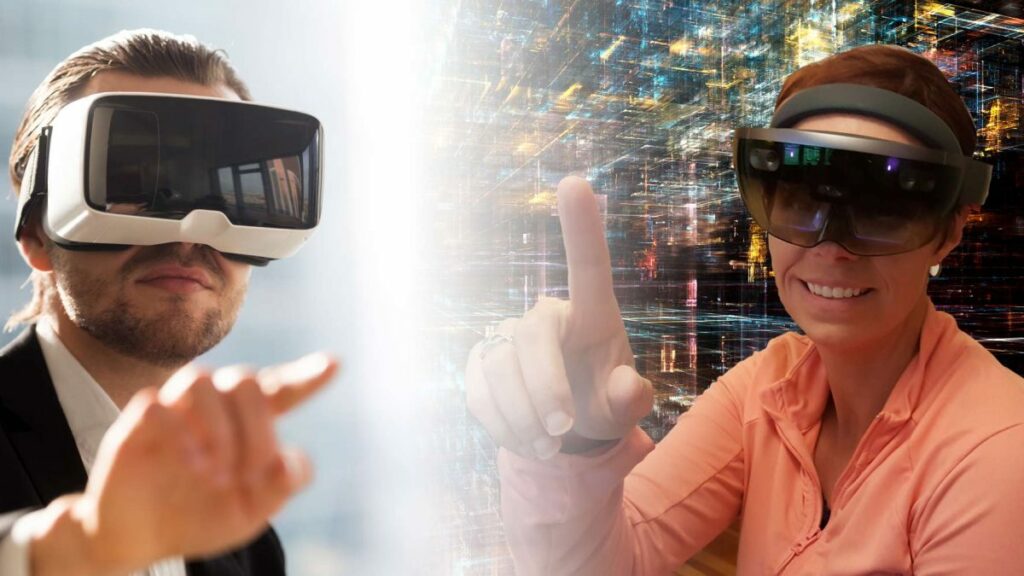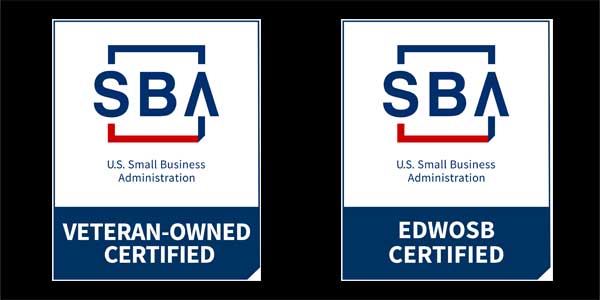What Is the Difference Between AR vs VR?
Before you can determine whether to choose AR vs VR for your safety training, you need to understand the differences between augmented reality vs virtual reality so you can make an informed decision on which type of training is right for your workplace.
Depending on your safety training needs, augmented reality might be a better fit than VR. Of course, the opposite is true, as well. In some cases, a combination of AR and VR works well to accomplish just the right training outcome.
In a nutshell, AR enhances your world, and VR replaces your world.
Before we try to decide what’s right for your company, let’s take a closer look at each type of technology.
What Is Virtual Reality?
Virtual Reality (VR) replaces your entire circumstance, using a special headset. Software is created to replicate the world you and your co-workers see every day. For example, if you work in a warehouse, the software can be produced to look exactly like the warehouse you work in, a construction site, a manufacturing facility, or an oil field, to name a few.
We start by designing the virtual world to replace your current working environment, down to the most minute details (such as your logo on the hard hats or a specific layout of machinery). At this point, the scene is perfectly set with familiarity so that when workers don the VR headset, they feel like they are literally “on the job.”
In this safe, almost life-like situation, then the user can experience hazardous conditions in virtual reality settings with none of the risks they would have in real life.
One example would be ladder safety. In the VR scene, a computer-simulated ladder would be created to look exactly like the ladder in actual use. The trainee is required to assess the ladder for safety. They could fully rotate the ladder to inspect what it’s made of, whether it is appropriately labeled, whether the steps and rails were in adequate condition, and so on, with the purpose of identifying if the ladder is in compliance with the intended use. Using VR you could even simulate a conductive aluminum ladder contacting overhead electrical wiring, including the resulting sparks and noise, without the trainee experiencing any danger.
If the user isn’t able to identify all of the safety risks in the ladder example, then there would be an opportunity for the VR training module to point out the missed risks. Additionally, we would educate the worker on how to spot them in the future, and maybe more importantly, WHY these risks must be detected.
What Is Augmented Reality?
Augmented Reality (AR) differs in that it enhances your world by overlaying animation, graphics, and information on top of a video of the real world. Augmented reality can be experienced by using a device like Google Glass, a Head-Up Display (“HUD”), or by looking “through” a smartphone.
So, if you want to, for instance, demonstrate taking apart an engine block, you can pull that up in an augmented reality world environment. With the use of AR you can pull a component apart and identify what each piece is. Imagine if the parts were numbered for sequence and tagged with other relevant information like wrench size, torque specifications, and proper orientation, for example.
If we use the same example of a using your real-life workplace as a use case for AR-based training, we would come to your warehouse or construction site and create an immersive 360° video of the exact place your workers do their jobs every day.
From there, we would create augmented reality overlays to demonstrate particular training objectives. As an example, if we wanted to train on manufacturing safety, we would show comprehensive overlays such as:
- Working clearances
- Approved walking zones
- PPE requirements for each workstation and task
- Pinch points
- Blind corners
- Electrical, chemical, or other hazards
- Paths for emergency egress
How Does This Apply to Safety Training?
An excellent safety training program includes:
1) Delivery that is compelling enough to
2) Motivate the learner to remember the subject matter, take it to heart, and
3) Most importantly, follow through by complying with the training in the actual workplace.
As a Safety Manager, you are well aware of how challenging this can be. A training video with a multiple-choice exam is a great start, but it can fall short of transferring to actual safety mindfulness in the work environment. Conventional computer-based training software is a little better.
It would be ideal for taking each team member in the actual workplace and working the training program shoulder-to-shoulder them, but this is time-intensive, cost-prohibitive, and also might place the learner in a dangerous position. Or is it?
Consider a leading-edge alternative: Extended Reality or “XR.” XR is usually experienced as Augmented Reality (“AR”) and Virtual Reality (“VR”). AR and VR have the realism of hands-on hazard training without being hazardous. Imagine being able to replicate a dangerous condition at will, for purposes of safety training, without placing the learner in a hazardous situation.
The Difference Between AR vs VR
While AR and VR often get confused, you can see how they are quite different from each other. They both are powerful tools to enhance your existing safety training program.
An easy way to remember the difference is that Virtual Reality replicates and replaces your current world, and Augmented Reality adds to or augments your current world.
Two innovative and powerful technologies that will make any company stand out.
Without a doubt, AR and VR are leading the way for companies to create a safer work environment, with more engaged learners who have higher retention, all while demonstrating a compelling return on investment (ROI).
If you’re curious about how virtual reality safety training or augmented reality can support your company, click here to get customized information.


